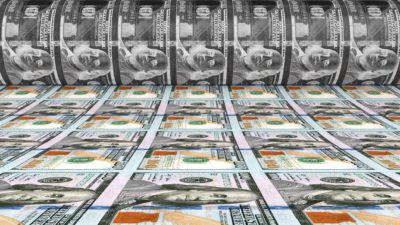Something quite extraordinary happened last night (our time). One of the major United States share markets hit a new all-time high. Not a 52-week high, not a post-COVID crash high, an all-time high.
Yes, that's right. Overnight, the Nasdaq Composite Index reached a high of 11,144.5 points intraday and closed at 11,129.73 points. That puts the Nasdaq more than 22% higher than where it started the year and more than 62% above its 23 March lows.
Other US market indexes aren't quite at all-time highs though. The S&P 500 Index is still a few points off of its record, but still up 3.8% year to date. The Dow Jones Industrial Average is still down 3.55% for the year so far.
Even so, the fact that we have the Nasdaq at record highs, and the S&P 500 hot on its heels raises a number of questions for me.
Our own S&P/ASX 200 Index (ASX: XJO) isn't quite at the same level. It's still down 9% year to date, despite rising more than 33% since 23 March.
So, I'm just going to state the obvious here. The US has a share market that is reaching for all-time highs… in the midst of one of the worst economic climates in living memory. The coronavirus pandemic has ravaged countries and economies around the world, but the US is arguably in a worse-off state than most other countries. At the time of writing, it houses almost a quarter of confirmed global cases of COVID-19. Yet its markets are leading a global recovery. Is this sustainable?
Why the US markets matter to ASX investors
Sure, the US markets are perhaps at a strange level relative to their own economy (and arguably the global economy). But why should this matter to ASX investors?
Well, here's why. The ASX is highly correlated to the performance of the US share markets – much more than most ASX investors would like to admit. It's no coincidence that the US markets and the ASX both hit their pre-COVID highs back in February at almost the same time. Nor is it a coincidence that both markets found their bottom in March at the same time as well. It was the US Federal Reserve's announcement of quantitative easing that sparked the move back into bull market territory on 24 March after all — for both the ASX and the US markets.
If US investors decide that things have run too far and a correction comes their way, you can bet we will feel the effects on our own ASX as well, judging by the high correlation both of our markets have seen throughout this year at least. And with markets at all-time highs in the US, I think this is a definite possibility, considering what is happening to the US economy.
Foolish takeaway
It's for this reason that I think ASX investors should be extremely vigilant right now. I myself am not selling everything. But I am taking profits off the table where I can, just to ensure a reasonable cash position is available if the markets do pull back. You might not share this sentiment, but remember that the time to make hay is while the sun is shining.







